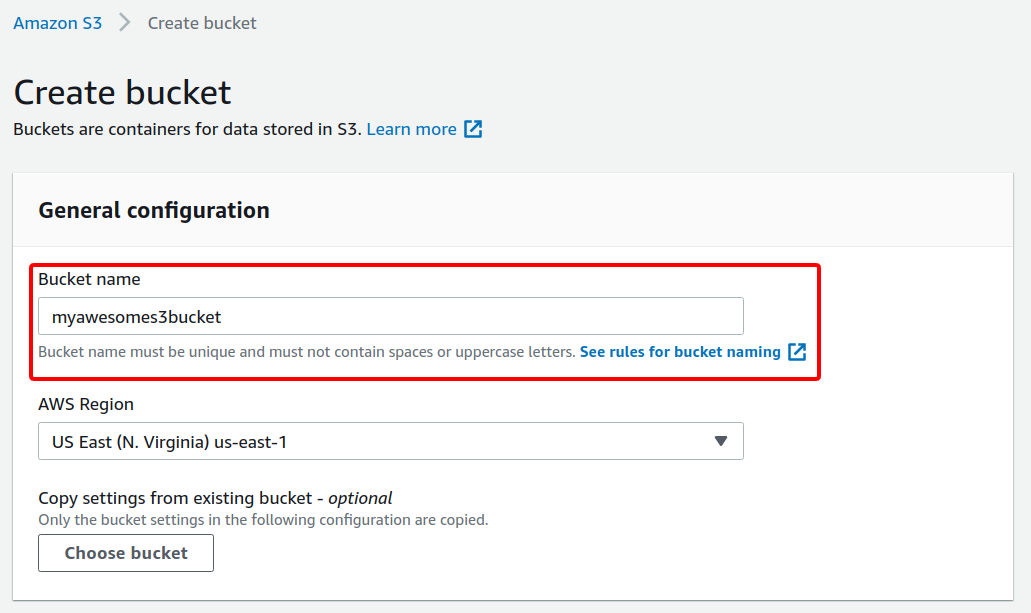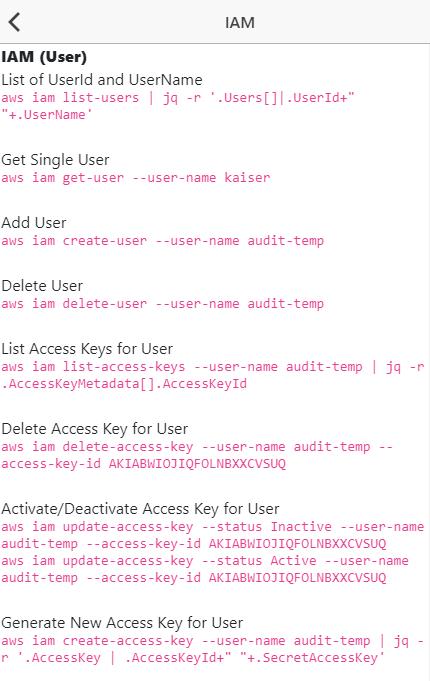How to create an S3 bucket from AWS CLI; How to purge an SQS queue from AWS CLI; How to purge messages from an SQS queue from AWS Management Console; How to delete unused EBS volumes from AWS CLI to save on cost; How to configure a dead-letter queue for an existing SQS queue; S3 CLI Commands; How to find the size of a Redshift database. Pass the AWS Certified Solution Architect Associate (SAA-C02) exam. S3 Cheat Sheet 6m 43s. Command Line Interface (CLI) 1m 25s. There AWS CLI cheat sheets for Amazon S3 commands and EC2 commands. I have recently designed and uploaded an AWS S3 CLI cheat sheet on the https.
- Aws S3 Cli Commands Cheat Sheet Download
- Aws Cli S3 List
- Aws Cli S3 Commands
- Aws Cli S3 Source
- Aws Cli S3 Download File
- Aws Cli Commands
- S3://my-bucket/path -delete -exclude 'path/MyFile?txt' delete: s3://my-bucket/path/MyFile88.txt ' // Sync with delete, excluding MyFile2.rtf - local file is NOT deleted $ aws s3 sync s3://my-bucket/path.delete -exclude './MyFile2.rtf' download: s3://my-bucket/path/MyFile1.txt to MyFile1.txt ' // Sync with delete, local copy of MyFile2.rtf is deleted $ aws s3 sync s3://my-bucket/path.
- Intro to AWS Command Line Interface (AWS CLI) David Cobb Why Command Line? AWS CLI, and shell in general, is a big learning curve. Investing effort and focus will pay off your entire cloud career. My goal today is to get you interested and equipped to get started. Get a AWS Free Tier Account 2.
If you are new to Elastic Beanstalk, it’s recommended that you go through this free AWS Elastic Beanstalk crash course.
Below are the major commands used frequently while managing the elastic beanstalk environment.
To check the availability of a CNAME
To create a new application

Compose Environments
Aws S3 Cli Commands Cheat Sheet Download
To create a new environment for an application
Aws Cli S3 List
The following command creates a new environment for version “v1” of a java application named “CldVdsApp”:Aws Cli S3 Commands
To specify a JSON file to define environment configuration options
The following create-environment
 command specifies that a JSON file with the name myoptions.jsonshould be used to override values obtained from the solution stack or the configuration template:
command specifies that a JSON file with the name myoptions.jsonshould be used to override values obtained from the solution stack or the configuration template:To create a storage location
The following command creates a storage location in Amazon S3:
To abort a deployment
To delete an application
The following command deletes an application named CldVdsApp
Aws Cli S3 Source
:Aws Cli S3 Download File
Aws Cli Commands
You can refer the complete set of AWS CLI for elastic beanstalk on this link.Note:- All the above commands are taken from different AWS CLI reference guides and put in one place over here. Please run the commands after due diligence as we won’t be responsible for any mistakes in executing the commands and it’s consequences. If you have any concern or query feel free to contact us or comment below.
This cheat sheet is based on the AWS Certified Developer Associate walk through by Andrew Brown. Originally I wrote down the cheat sheet from his presentation. However, I thought maybe others might have a use for the same cheat sheet in a searchable format. I really encourage you to watch his walk through over at YouTube.
- CLI - stands for Command Line Interface
- SDK - stands for Software Development Kit
- The AWS CLI lets you interact with AWS from anywhere by simply using a command line
- The AWS SDK is a set of API libraries that let you integrate AWS services into your applications
- Programmatic Access - must be enable per user via the IAM console to use CLI or SDK
- aws configure - command is used to setup your AWS credentials for the CLI
- The CLI is installed via a Python script
- Credentials get stored in a plain text file (whenever possible use roles instead of AWS credentials)
- The SDK is available for the following programming languages: C++, Go, Java, JavaScript, .NET, NodeJs, PHP, Python, Ruby
Credits
Andrew Brown from ExamPro
